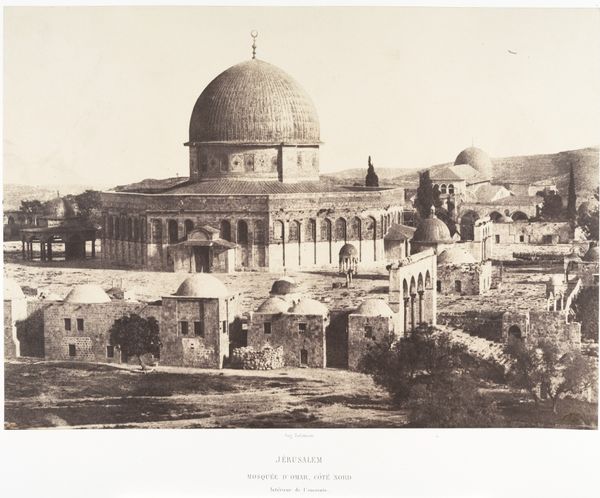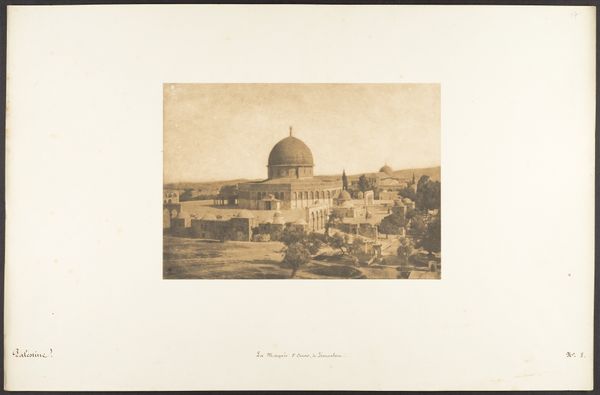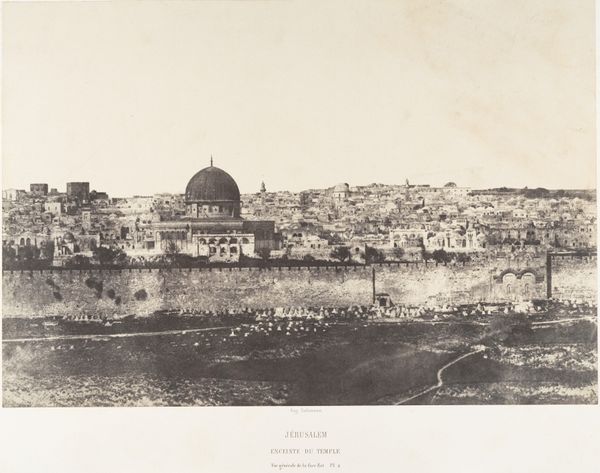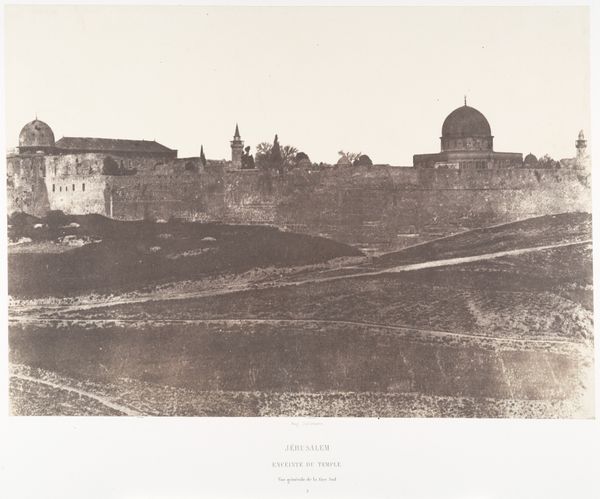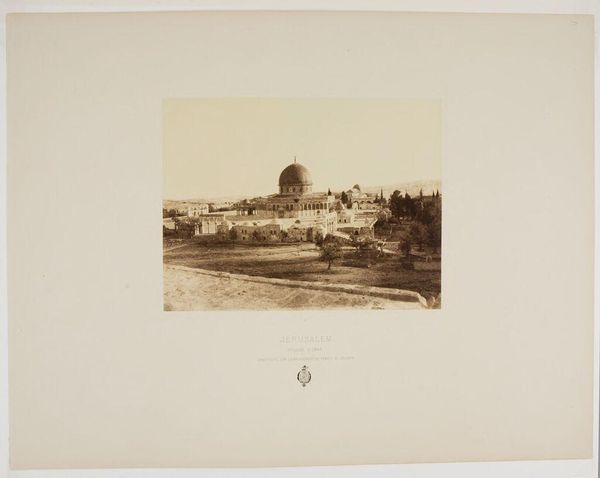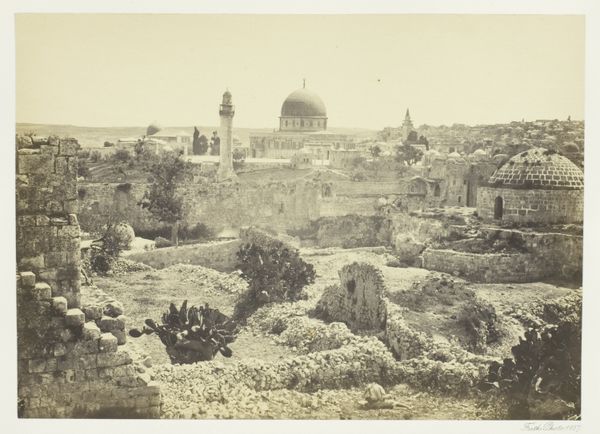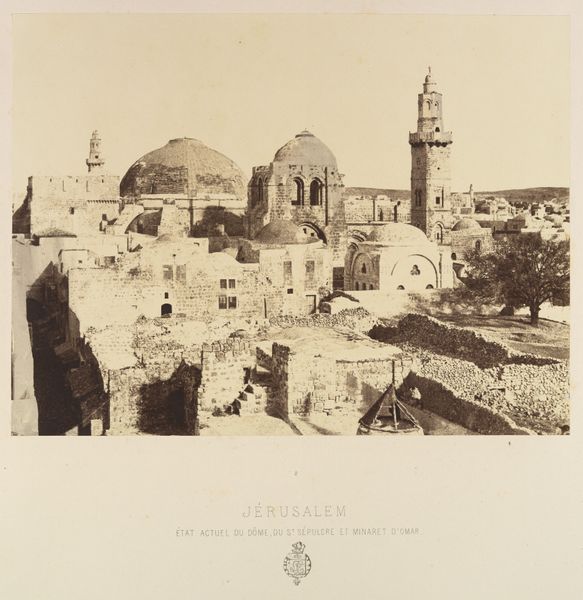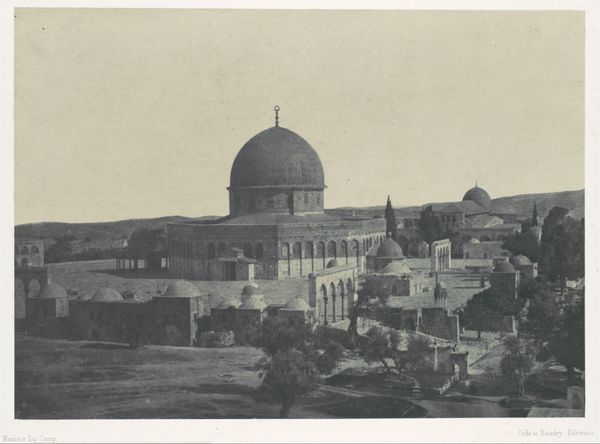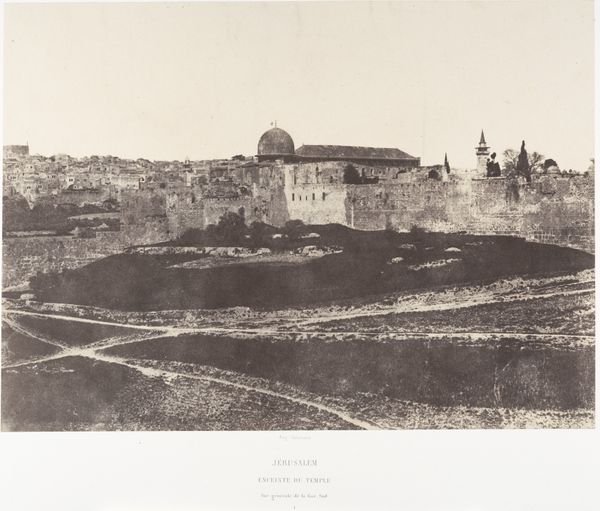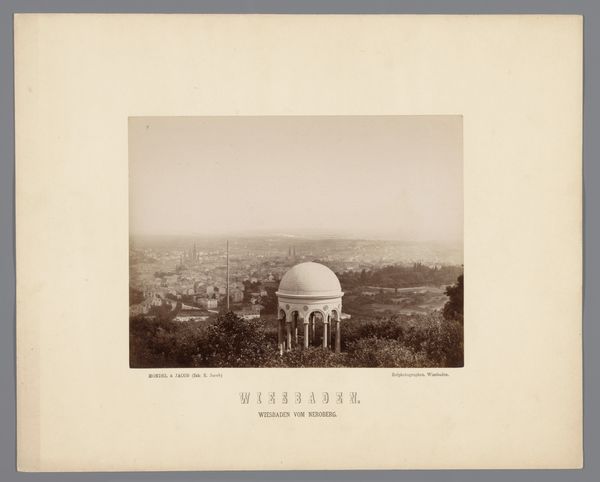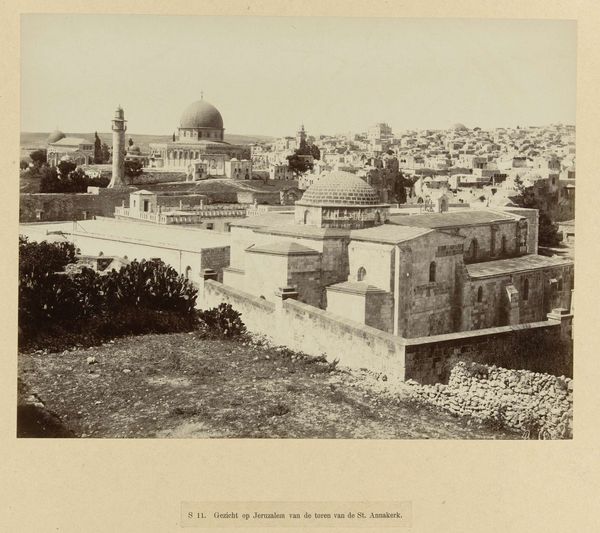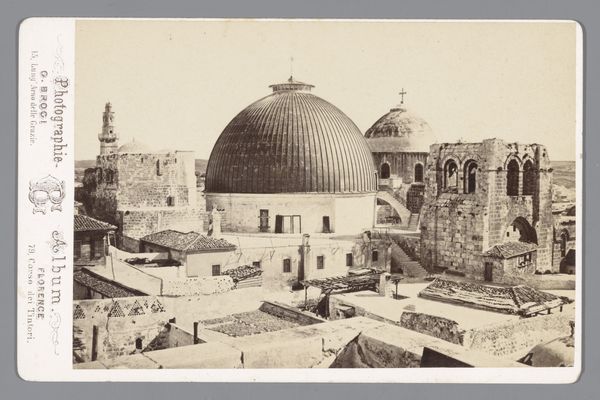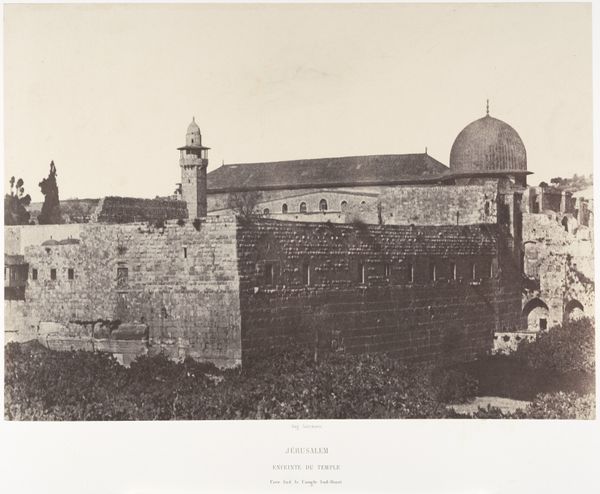
Jérusalem. Mosquée d'Omar, construite sur l'emplacement su Temple de Salomon 1860
0:00
0:00
photography
#
landscape
#
photography
#
orientalism
#
cityscape
#
islamic-art
Dimensions: Image: 8 7/16 × 11 1/8 in. (21.5 × 28.2 cm) Mount: 17 15/16 × 23 1/4 in. (45.5 × 59 cm)
Copyright: Public Domain
Louis de Clercq created this photograph of Jérusalem's Mosquée d'Omar using the Calotype process, one of the earliest photographic techniques, during the mid-19th century. The image’s sepia tones arise from the chemical reactions on the paper, a direct result of its making. Think about the labor involved: coating paper with light-sensitive chemicals, exposing it in a large camera, and then developing the print. The Calotype, unlike later processes, yielded a slightly fuzzy image; look closely and you'll see that soft focus. This wasn't a slick, mass-produced image. Each print had a unique, handmade quality. De Clercq's choice of the Calotype speaks volumes. Photography at this time was intertwined with exploration, colonial expansion, and documentation. While it might appear objective, consider the photographer's perspective, the choices in framing, and what is included or excluded. The human labor behind the image, both in its making and in the scene it depicts, encourages us to reflect on its historical and cultural context, seeing beyond the surface of the image.
Comments
No comments
Be the first to comment and join the conversation on the ultimate creative platform.
